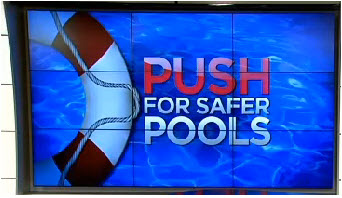|
After recent tragic events in South Florida, counties push for better pool safety laws
Miami-Dade Commission Passed New Pool Safety Regulations and Broward Moves for Better Pool Safety Laws

July 1 2014, MIAMI (David Sutta, CBSMiami) – The Miami-Dade commission introduced an ordinance Tuesday intended to reduce the number pool deaths by electrocution.
The vote is the first of two that would change the way pools are constructed countywide and stems from a CBS4 investigation into four children shocked in pools earlier this year.
The decision is essentially telling the rest of the State of Florida current pool laws on the books are not good enough. In a state with more than a million pools, many counties will likely be looking to copy what Miami-Dade is doing, to prevent further tragedies.
The CBS4 investigation started in April with a 7-year-old boy who was electrocuted as he swam in his pool. Days later, across town, surveillance cameras captured the chaos at the Palms West apartments in Hialeah. Three children were pulled from their pool when a pump sent an electrical charge into the water. Click here to view the CBS4 Investigation.
September 17, 2014 MIAMI (CBSMiami) Broward County joined Miami-Dade Wednesday in an effort to mandate new pools carry low voltage power. Click here to view the report.
Mike Holt Comment: I would not permit a light in my pool, except optical fiber and I encourage electrical contractors to recommend to the customers to have the pool light ‘disconnected’ from the power source, and to have the wiring, bonding, and GFCI protection inspected to ensure that the installation is safe. |



